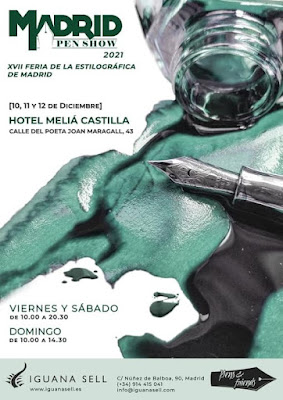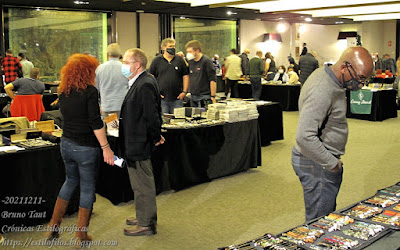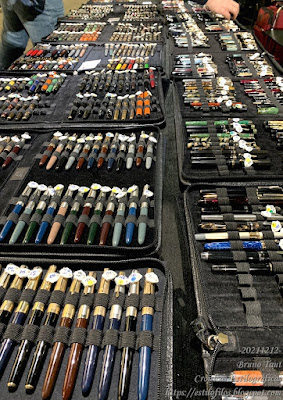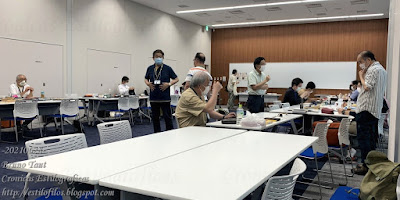This pen show had everything against—a pandemic, a hotel that was closed on the planned dates, a new venue, the changing local policies, the unclear and ever changing travel requirements, a new mutation of the virus discovered days before the event... So, not much was in there for the pen show to be celebrated and, much less, to succeed.
But the people responded. There was a real crave in the Spanish aficionado to reconnect with the community and with the market.
Needless to say, the event figures did not reach the values of 2019 (no pen show in Madrid in 2020) and before. On this occasion, only 49 traders and about 1000 visitors joined the party. But it was a good party.
Several traders reported that they were selling more pens than on previous pen shows, which shows that there were some savings after two years without similar events.
But it was the sense of community what made the event successful. Visitors from all over Spain –from the Canary Islands and from the Balearic Islands, from the Basque Country and from Andalusia, from Murcia and from Catalonia...-- gathered at the Meliá Castilla Hotel and spent their money on pens that came all the way from all over Europe (UK, France, Netherlands, Germany, Portugal, …) and from the US.
So, the Madrid Pen Show is alive and kicking. This year´s edition proved how well connected the Spanish community is despite the pandemic, and in 2022 the Madrid Pen Show will be even better.
Montblanc 146 – Sailor Yama-dori
Bruno Taut
December 15th, 2021
etiquetas: España, Madrid, evento, mercado
Bruno Taut
December 15th, 2021
etiquetas: España, Madrid, evento, mercado





























































